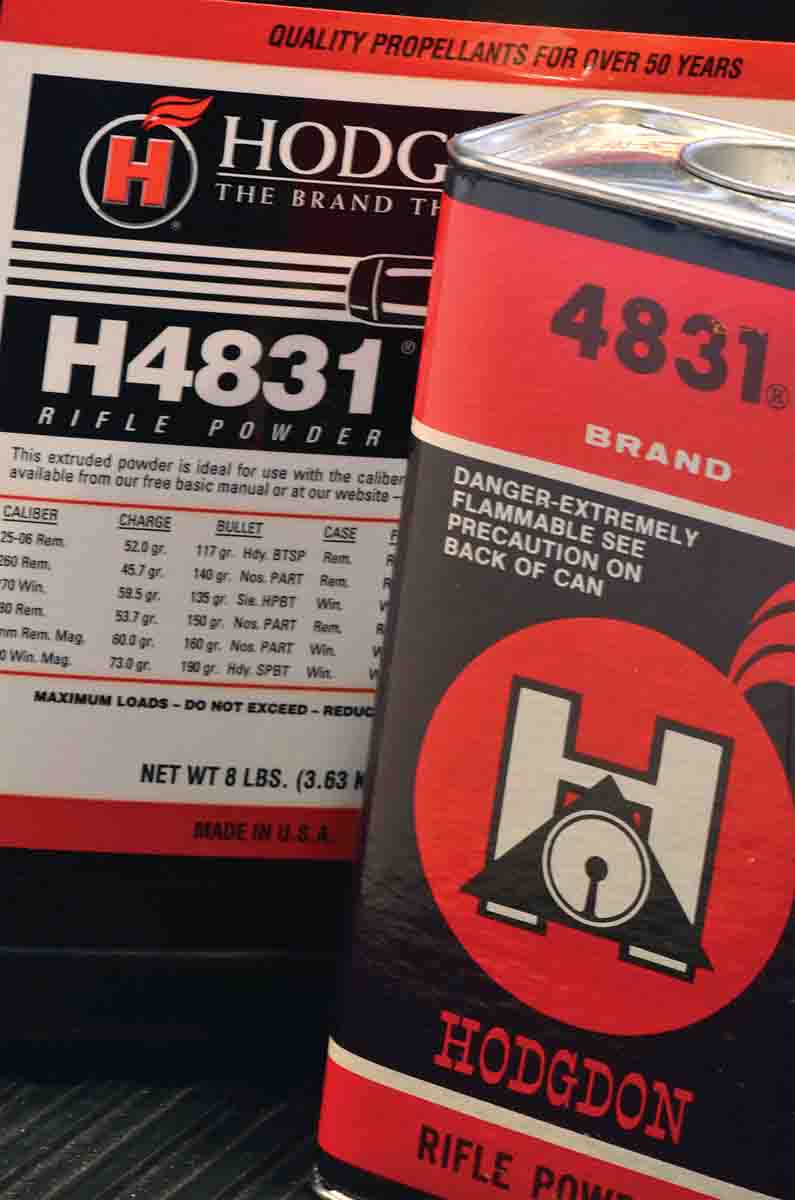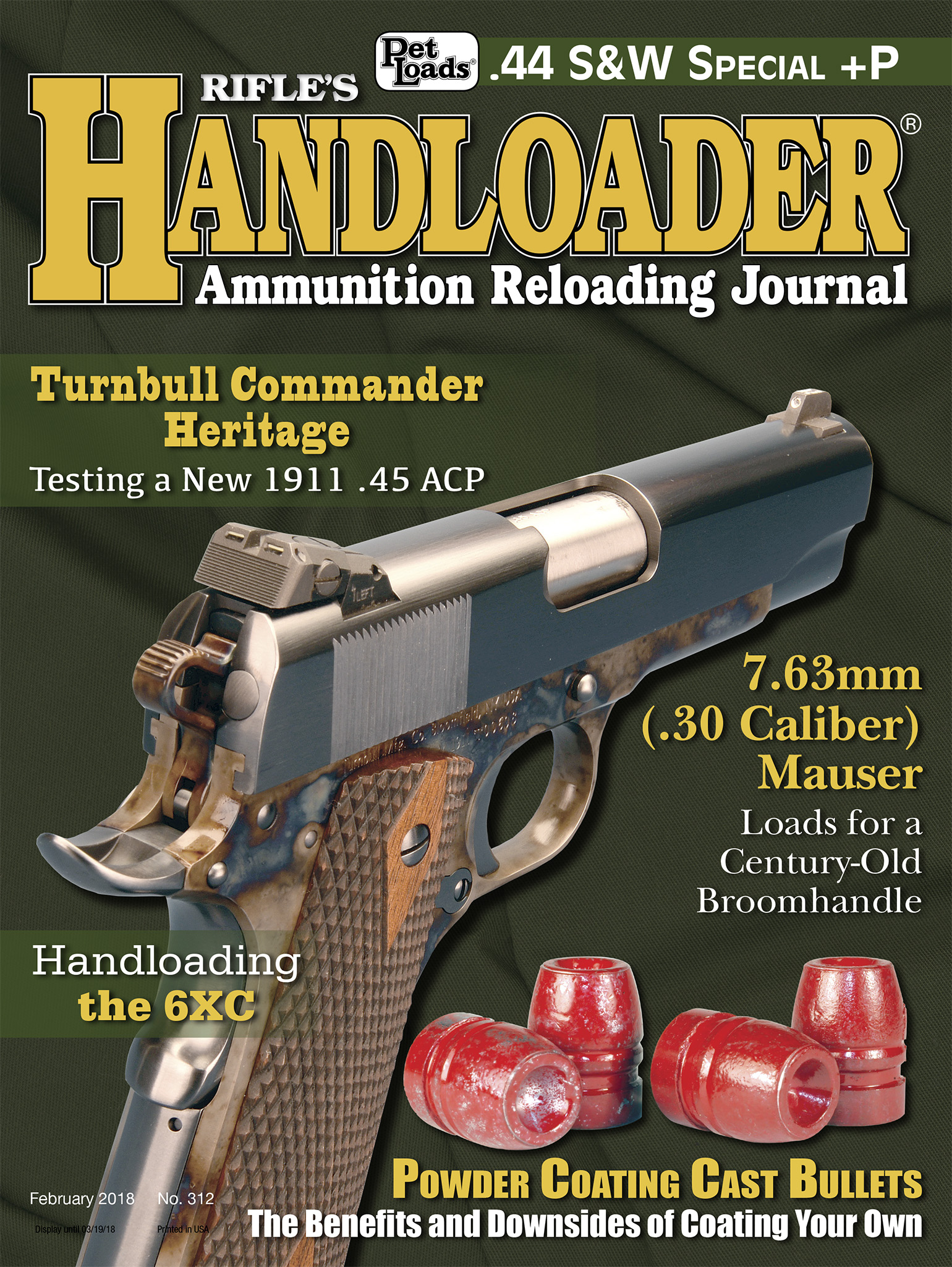In Range
Putting Shawnee Mission on the Map
column By: Terry Wieland | February, 18
There are a few places in the U.S. that are unknown to most Americans, but mention their names to a handloader and his eyes light up. Among these are Lewiston, Idaho, Sedalia, Missouri, Grand Island, Nebraska and Shawnee Mission, Kansas.
In the current idiom, they are flyover towns in flyover states. They are places you come from, not places you go to. But not for handloaders; for us, these are Manhattan, Beverly Hills and London’s New Bond Street, all rolled into one.

For the record, those mentioned above are, in order, the home towns of Speer, Sierra, Hornady and Hodgdon Powders. Without them, we wouldn’t have much to work with, to play with and to dream about. Well, maybe that is an overstatement, but surely some of our dreams would disappear.
If a handloader has ever wondered exactly how the Hodgdon Powder Company came to be associated with Shawnee Mission, Kansas (a suburb of Kansas City), the details are all spelled out in a new book about the company called, simply, The Powder People.
The story of how Bruce Hodgdon got into the gun-powder business is well known. He got out of the navy in 1945, realized there was an opportunity to be had in the government’s disposing of huge amounts of war-surplus supplies, including unused gunpowder, and bought a 25-ton lot. He then put a small ad in American Rifleman, sold it a bit a time and then bought some more.
Hodgdon also founded a small dynasty in the form of his two sons, J.B. and Bob, and a grandson Chris. Not only is it still in business, still family owned and run and still in Shawnee Mission, but it has grown to be the American powerhouse in the gunpowder business. Not only does Hodgdon have its own noteworthy powders, it also now owns the Winchester line and IMR (DuPont).
What sets Hodgdon apart from those two older lines is the level of attachment Bruce Hodgdon and his descendants had to individual handloaders. You could write a letter to Bruce and get an answer; call on the phone and you’ll probably find yourself speaking with the man himself. A very old friend of mine, Ron Bowman, who ran the Canadian company that imported Hodgdon Powders, talked about the Hodgdon family on a first-name basis. He certainly did not do that with other lines he imported, like Hercules.
Hercules is actually a good example of how the traditional powder business was always run, and the mould that Bruce Hodgdon broke over the course of five decades.
Hercules began life as the double-based powder line of DuPont in the nineteenth century, was detached by the trust busters to become Hercules, an independent company, and is now Alliant, part of ATK. Or at least it was until ATK’s civilian products were spun off to become Vista Outdoors. If I wanted to talk to someone about the best way to load Unique, a famous Hercules powder, who would I call?
This is not to criticize corporate America, or DuPont de Nemours, or ATK. It is simply to point out that in competition with the impersonal corporate world, the personal touch can take you a long, long way.
A couple of years ago Hodgdon announced that it was, once again, discontinuing SR-4759. This is one of the IMR powders with a long history. “SR” stands for “sporting rifle,” as opposed to the military IMR (Improved Military Rifle) powders from the old DuPont line from before 1920. SR-4759 was never one of the major players, like IMR-3031, but it was a solid performer with some very specialized uses. The main one was light loads in high-powered rifles – not a huge market share admittedly, but it is a field with few participants.
SR-4759 was discontinued by DuPont back in 1965 but was reintroduced in the mid-1970s. When Hodgdon announced it was being discontinued a second time, I called Ron Reiber, the company’s ballistician. He explained that sales were declining, finding more SR-4759 was more trouble than it would be worth, and anyway, the new IMR Trail Boss would perform all the same duties as SR-4759, and perform them better.
One of the few competitors’ powders that will do what SR-4759 does is Unique (formerly Hercules Unique), the second-oldest powder (after Bullseye) still in production. Words are inadequate to describe my feelings for Unique, which has about the widest range of applications of any powder, anywhere. If Vista Outdoors were to announce it was discontinuing Unique, I wouldn’t know what to do or who to call to get an explanation. That is the difference between Hodgdon and just about everybody else, one exception being Western Powders.
Although it was probably not making any real money on SR-4759, Hodgdon did not discontinue it until there was a powder in the line that could do the same job. For handloaders who own and shoot older rifles and pistols for old and obsolete calibers, two factors are vital. The first is finding good loading data for them; the second is finding powders that are included in that loading data.
Today there are so many new cartridges, with new ones coming along so quickly it is difficult to keep track, publishers of loading manuals are scrambling to provide data for them. Because space is limited in published manuals, older and less popular cartridges get squeezed out. When new powders come along, there is neither time nor money for testing to develop data for old cartridges. By the same token, older powders get squeezed out to make room for new ones.
Often, you’ll go to an old loading manual hoping to find data for something like the .40-65 Winchester only to find that all the loads are for powders that went out of production 50 years ago. Even a cartridge as timeless as the 8x57JS runs into problems like this because of the web of intersecting factors that have affected it over the 130 years of its existence. The 8x57 case is the same now as it was in 1888, but virtually everything in and around it has changed.
Mauser has reintroduced the Mauser ’98 rifle and one of the chamberings is 8x57JS, but if you go looking for loading data, you will find that most of it is very low pressure. This is because there are so many old and different rifles out there in who knows what condition. Most of the data that can be found is for older powders. These include IMR-4064 and BL-C(2), both dating from the Second World War. Of course, there are ways around that, but they are not as easy as opening a book to page 231 and finding 18 different tested loads using eight different powders and half a dozen bullet weights.
One way around it is to use the Powley computer for handloaders. The problem there is that it deals only with half a dozen IMR powders like 4198, 3031, 4064 and 4320, and Hodgdon’s 4831. If those weren’t available, the Powley computer would be useless. There is no sign of those leaving the line anytime soon, but you never know.
All of this adds up to one point: As shooters we should be extremely grateful that the largest powder company in the country today is run by a family of shooters who genuinely cares if we have what we need to make our guns go bang. For that, we have Bruce Hodgdon to thank.


